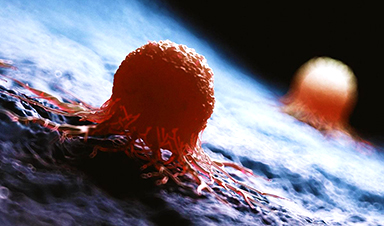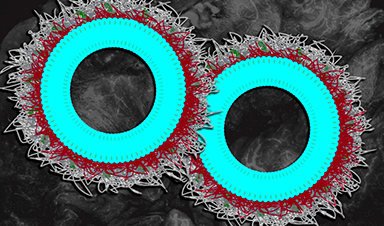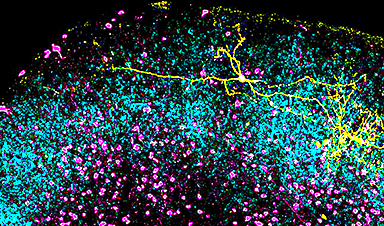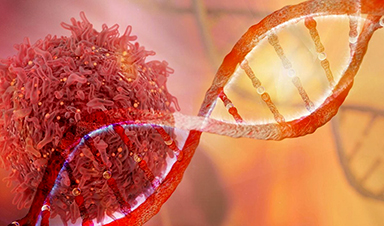Nanotechnology, Nanomedicine, and AI: Toward the Dream of Global Health Care Equivalency

![]()
“Progress in medicine, global access to information and a global age pyramid that is already turning upside-down will increase the demand for good health care. This in turn will increase life expectancy and drive innovation. This re-enforcing circle will change societies’ views on health care. Whereas today it is seen as a cost that needs to be controlled — which slows down progress — it might become the global driving force of innovation and humanity, replacing other areas of public investment focus.”
Harald Stock, President & CEO, ArjoHuntleigh
Introduction
We are very fortunate indeed to be living at a time where the speed of advances in medical technologies is such that we can expect to live increasingly healthier and longer lives; far beyond what would ever have been imagined as possible only a century ago. However, in contrast to our natural inalienable human rights to life, liberty, and the pursuit of happiness, our equally important right to good health (and by extension good health care), which is critical for all of us, is unfortunately either in disarray, dysfunctional, or completely neglected on a global scale.
The State of Health Care Today
A news item released on December 2017, by the World Health Organization (WHO) entitled: “World Bank and WHO: Half the world lacks access to essential health services, 100 million still pushed into extreme poverty because of health expenses”, reported that “800 million people spend at least 10 percent of their household budgets on health expenses for themselves, a sick child or other family member. For almost 100 million people these expenses are high enough to push them into extreme poverty, forcing them to survive on just $1.90 or less a day.” A 2017 report authored by Dr. Margaret Chan (Director-General, WHO) stated that “Nearly 2 billion people have no access to basic medicines, causing a cascade of preventable misery and suffering.” The current state of affairs in the developed world for those who are fortunate enough to have access to medical care, in some cases includes the burden of $1000 per dose, and from $100,000 to $1.21 million per year in individual drug expenditures alone.
What is Global Health Care Equivalency (GHCE)?
Looking ahead over the next 10-30 years, with the rapid emergence of, and synergies between, the disciplines of nanotechnology, nanomedicine, and AI, we can envisage a future world where any individual on the planet has access to the same advanced and cost effective nanomedical diagnostic and therapeutic technologies, no matter how wealthy or impoverished they are, no matter where they happen to reside, or under what conditions they live. Progress toward this goal will be incremental, with each successive wave of nanomedical technologies being more advanced than the previous wave. The tipping point will arrive with the emergence of Molecular Manufacturing (MM), http://ieet.org/index.php/IEET/more/boehm20160115, which will make possible the cost effective fabrication of the classes of advanced autonomous nanomedical devices that Boehm describes in his first book: Nanomedical Device and Systems Design: Challenges, Possibilities, Visions. A situation may then well arise where the entire human population will finally come to realize the inalienable human right of optimal health for life through the establishment of a worldwide health care system under the moniker: “Global Health Care Equivalency” (GHCE). The details and vision for GHCE will be articulated in an upcoming book: Nanotechnology, Nanomedicine, and AI: Toward the Dream of Global Health Care Equivalency that is currently being generated by the originator of this concept (Frank Boehm – CEO of NanoApps Medical Incorporated) in collaboration with numerous thought leading authors.
Perceived Benefits of GHCE
The attainment of GHCE might serve to significantly reduce the perception of individuals in the developing world of being marginalized, at least in terms of health care, which may ultimately translate to conflict reduction. In the developed world, GHCE would serve to dramatically reduce health care expenditures across the board. Progress toward this goal will be incremental, with each successive wave of nanomedical technologies being more advanced than the previous wave. The tipping point will arrive with the emergence of Molecular Manufacturing (MM), http://ieet.org/index.php/IEET/more/boehm20160115, which will make possible the cost effective fabrication of the types of advanced autonomous nanomedical devices that Boehm describes in his first book: Nanomedical Device and Systems Design: Challenges, Possibilities, Visions.
It is worth noting here that all nations on a global scale stand to benefit immensely when their citizens are healthy, as they would save hundreds of millions, if not billions of dollars in health-related expenditures, not to mention lost work hours and overall productivity, due to illness and its associated incapacities.
The core essence of GHCE is aptly conveyed in the thought below:
“In a world facing considerable uncertainty, international health development is a unifying – and uplifting – force for the good of humanity.”
Dr Chan, WHO Director-General
What is Molecular Manufacturing (MM)
The first mention of the possibility of MM emerged through the words of Dr. Richard Feynman in 1959, via his famous talk, “Plenty of Room at the Bottom”, where he spoke of the possibility of the controlled manipulation of matter at the atomic level. Dr. Eric Drexler described the remarkable capabilities that he envisioned for a conceptual molecular assembler in his 1986 book, Engines of Creation. In 2003, Chris Phoenix generated a paper that articulated the Design of a Primitive Nanofactory. Dr. Robert Freitas Jr. et al., have extensively investigated Diamond MechanoSynthesis and personalized Nanofactories from 2002 to the present.
Once MM is developed, it will have the capacity to fabricate just about any consumer item or food, as well as advanced autonomous nanomedical robots from elemental atoms and molecules, guided by AI-driven specifications. By virtue of these fundamental feed stocks, it will likely become very cost effective to fabricate (physician prescribed) nanomedical devices to address virtually any condition that ails us, in one’s own home, via Factory@Home (F@H) units, which might be manifest as countertop microwave-sized appliances that are extensively distributed worldwide. Concurrently, home based atomic and molecular “disassembly” units would be able to completely recycle, sort, and repackage practically any type of material according to its specific atomic and molecular species, which could again be used to supply the F@H units for fabrication.
Awaking the Dream
Although the attainment of GHCE would indeed be a truly extraordinary achievement, we must keenly recognize that in reality, such a massive undertaking on a global scale will require intense and sustained high spirited collaboration between like minded individuals who have widely varied backgrounds within diverse areas of expertise. Highly specialized laboratories, dynamic administrative institutions, regulatory bodies, and government agencies worldwide will also be vital prerequisites for its realization, as will significant resources and time. We are all amazing individuals, each with our own unique talents and expertise that might contribute and be applied to this noble enterprise. Our working together might culminate in a positive critical mass on a global scale toward the actual realization of GHCE, which would ultimately be of benefit for each and every one of us, as we are finally “all” supported in our natural human right of optimal health for life.
News
Very low LDL-cholesterol correlates to fewer heart problems after stroke
Brigham and Women's Hospital's TIMI Study Group reports that in patients with prior ischemic stroke, very low achieved LDL-cholesterol correlated with fewer major adverse cardiovascular events and fewer recurrent strokes, without an apparent increase [...]
“Great Unified Microscope” Reveals Hidden Micro and Nano Worlds Inside Living Cells
University of Tokyo researchers have created a powerful new microscope that captures both forward- and back-scattered light at once, letting scientists see everything from large cell structures to tiny nanoscale particles in a single shot. Researchers [...]
Breakthrough Alzheimer’s Drug Has a Hidden Problem
Researchers in Japan found that although the Alzheimer’s drug lecanemab successfully removes amyloid plaques from the brain, it does not restore the brain’s waste-clearing system within the first few months of treatment. The study suggests that [...]
Concerning New Research Reveals Colon Cancer Is Skyrocketing in Adults Under 50
Colorectal cancer is striking younger adults at alarming rates, driven by lifestyle and genetic factors. Colorectal cancer (CRC) develops when abnormal cells grow uncontrollably in the colon or rectum, forming tumors that can eventually [...]
Scientists Discover a Natural, Non-Addictive Way To Block Pain That Could Replace Opioids
Scientists have discovered that the body can naturally dull pain through its own localized “benzodiazepine-like” peptides. A groundbreaking study led by a University of Leeds scientist has unveiled new insights into how the body manages pain, [...]
GLP-1 Drugs Like Ozempic Work, but New Research Reveals a Major Catch
Three new Cochrane reviews find evidence that GLP-1 drugs lead to clinically meaningful weight loss, though industry-funded studies raise concerns. Three new reviews from Cochrane have found that GLP-1 medications can lead to significant [...]
How a Palm-Sized Laser Could Change Medicine and Manufacturing
Researchers have developed an innovative and versatile system designed for a new generation of short-pulse lasers. Lasers that produce extremely short bursts of light are known for their remarkable precision, making them indispensable tools [...]
New nanoparticles stimulate the immune system to attack ovarian tumors
Cancer immunotherapy, which uses drugs that stimulate the body’s immune cells to attack tumors, is a promising approach to treating many types of cancer. However, it doesn’t work well for some tumors, including ovarian [...]
New Drug Kills Cancer 20,000x More Effectively With No Detectable Side Effects
By restructuring a common chemotherapy drug, scientists increased its potency by 20,000 times. In a significant step forward for cancer therapy, researchers at Northwestern University have redesigned the molecular structure of a well-known chemotherapy drug, greatly [...]
Lipid nanoparticles discovered that can deliver mRNA directly into heart muscle cells
Cardiovascular disease continues to be the leading cause of death worldwide. But advances in heart-failure therapeutics have stalled, largely due to the difficulty of delivering treatments at the cellular level. Now, a UC Berkeley-led [...]
The basic mechanisms of visual attention emerged over 500 million years ago, study suggests
The brain does not need its sophisticated cortex to interpret the visual world. A new study published in PLOS Biology demonstrates that a much older structure, the superior colliculus, contains the necessary circuitry to perform the [...]
AI Is Overheating. This New Technology Could Be the Fix
Engineers have developed a passive evaporative cooling membrane that dramatically improves heat removal for electronics and data centers Engineers at the University of California San Diego have created an innovative cooling system designed to greatly enhance [...]
New nanomedicine wipes out leukemia in animal study
In a promising advance for cancer treatment, Northwestern University scientists have re-engineered the molecular structure of a common chemotherapy drug, making it dramatically more soluble and effective and less toxic. In the new study, [...]
Mystery Solved: Scientists Find Cause for Unexplained, Deadly Diseases
A study reveals that a protein called RPA is essential for maintaining chromosome stability by stimulating telomerase. New findings from the University of Wisconsin-Madison suggest that problems with a key protein that helps preserve chromosome stability [...]
Nanotech Blocks Infection and Speed Up Chronic Wound Recovery
A new nanotech-based formulation using quercetin and omega-3 fatty acids shows promise in halting bacterial biofilms and boosting skin cell repair. Scientists have developed a nanotechnology-based treatment to fight bacterial biofilms in wound infections. The [...]
Researchers propose five key questions for effective adoption of AI in clinical practice
While Artificial Intelligence (AI) can be a powerful tool that physicians can use to help diagnose their patients and has great potential to improve accuracy, efficiency and patient safety, it has its drawbacks. It [...]















